In our era, nose-to-tail eating and honoring the whole animal is a dying art, and, even among those who occasionally eat organ meats, brains are a one-off, and occupy a curious place in the hierarchy of organ meats. For the culinary purposes of this post, I'm only speaking about brains I've eaten: pork, lamb, goat, and beef.
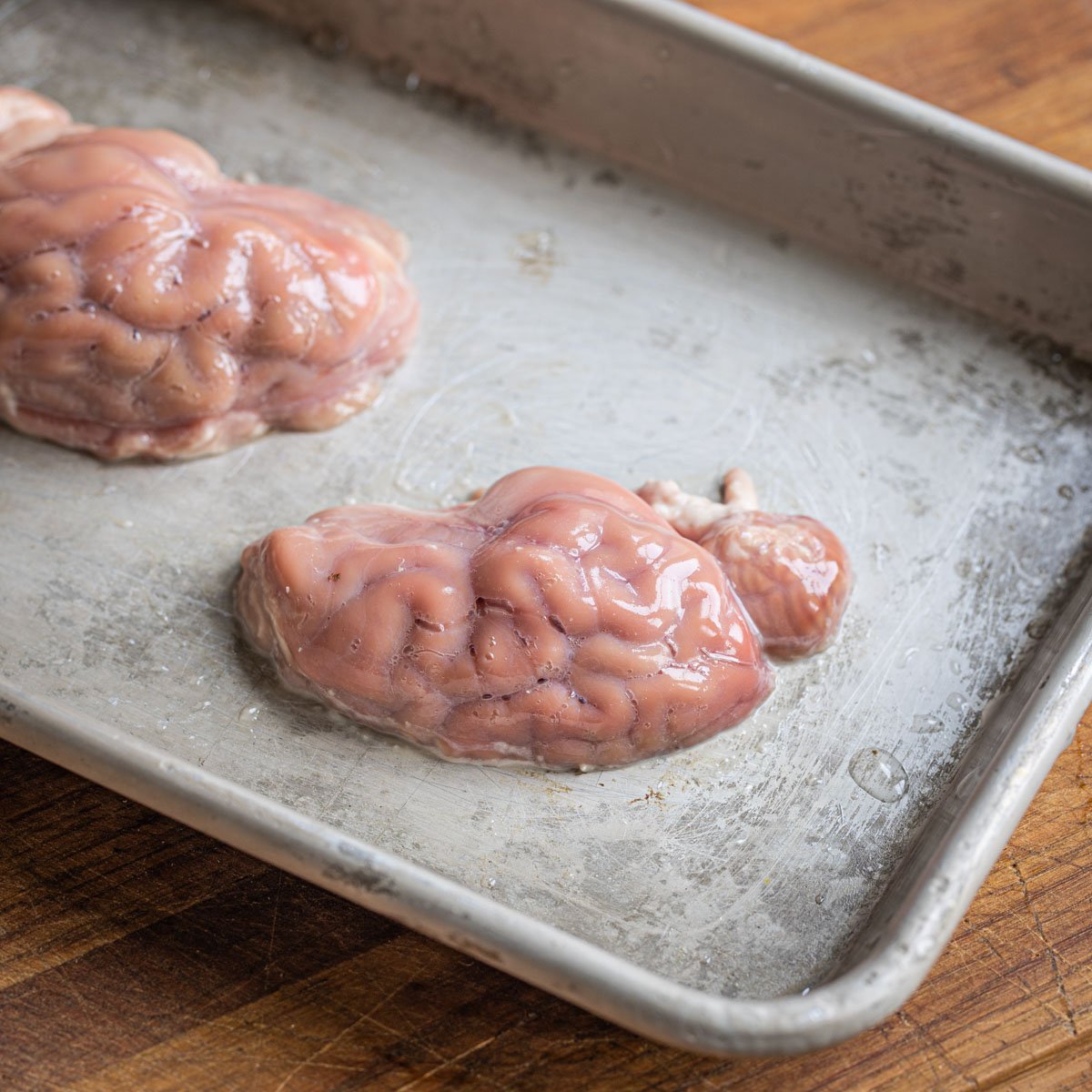
Compared to most people, I eat a lot of offal and organ meats, partly because as a chef, I enjoy the challenge of cooking them. Tenderloin? Prime rib? I love them, but to me, they're mostly a product of proper heating.
Cooking organ meats, many that would be thrown away (at least in the Western World) is culinary alchemy, and a test of skill. Turning trash to treasure is true cooking.
Brainphobia
Plenty of people will tell you they have family members that like the occasionally liver and onions, a smaller percentage might like steak and kidney pie. Grilled venison heart is a rite of passage plenty of deer hunters still enjoy.
But, brains have such a strong cultural stigma (at least in America) that even most people I know that eat other, more common organ meats will visibly cringe or laugh nervously at the very suggestion of eating them.
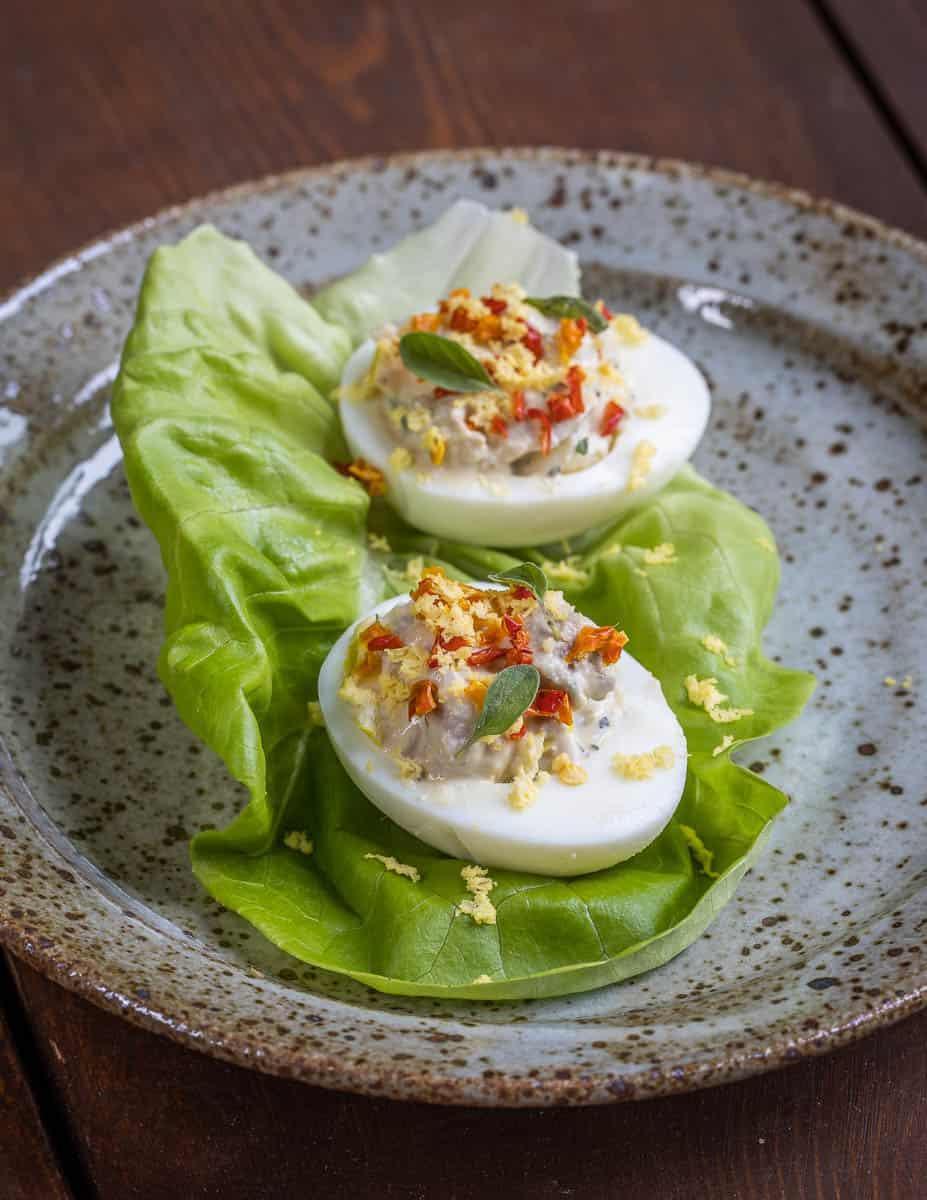
My hunch is that part of the reason most people (I include myself up to my mid 20's here) regard brains with the prejudice they do is because brains are inherently a different type of organ than the other commonly eaten offal. Kidneys, liver, and even sweetbreads, (glands from around the throat or heart that taste similar to brains), are all inert in that they're an organ with a singular purpose controlled by the brain.
I think, at least partly on a subliminal level, people are scared of eating brains as, in some way, they seem represent eating a consciousness, or a soul, as opposed to a simple chunk of muscle. In addition, prion diseases like the mad cow scares of the 80's and 90's in Britain understandably haven't done much to help the cause.
You're here to learn the dark art of brain cookery though, so I'm going to page through the grimoire and show you my process, starting with the intimate technique of how to cut a skull open to get brains.
Getting your hands on a whole head is probably the only way you're going to get at what's inside, unless you call and request very nicely from your local butcher, hog, beef, or lamb farmer, which is a good alternative to doing it yourself.
1. Cut open a skull with a reciprocating saw
First, you need to cut the head in half vertically with a saw. For home butchery, an electric reciprocating saw or Sawsall is what you want it will take a minute or so, but it's far easier than a hand saw, which is difficult, and messy.
In a butcher shop or restaurant, large bandsaws will cut the head in half in seconds—another reason you might want to kindly request someone split a pig head for you. Don't forget that a whole head means you can make headcheese, too, at least with pork.
2. The Importance of Soaking
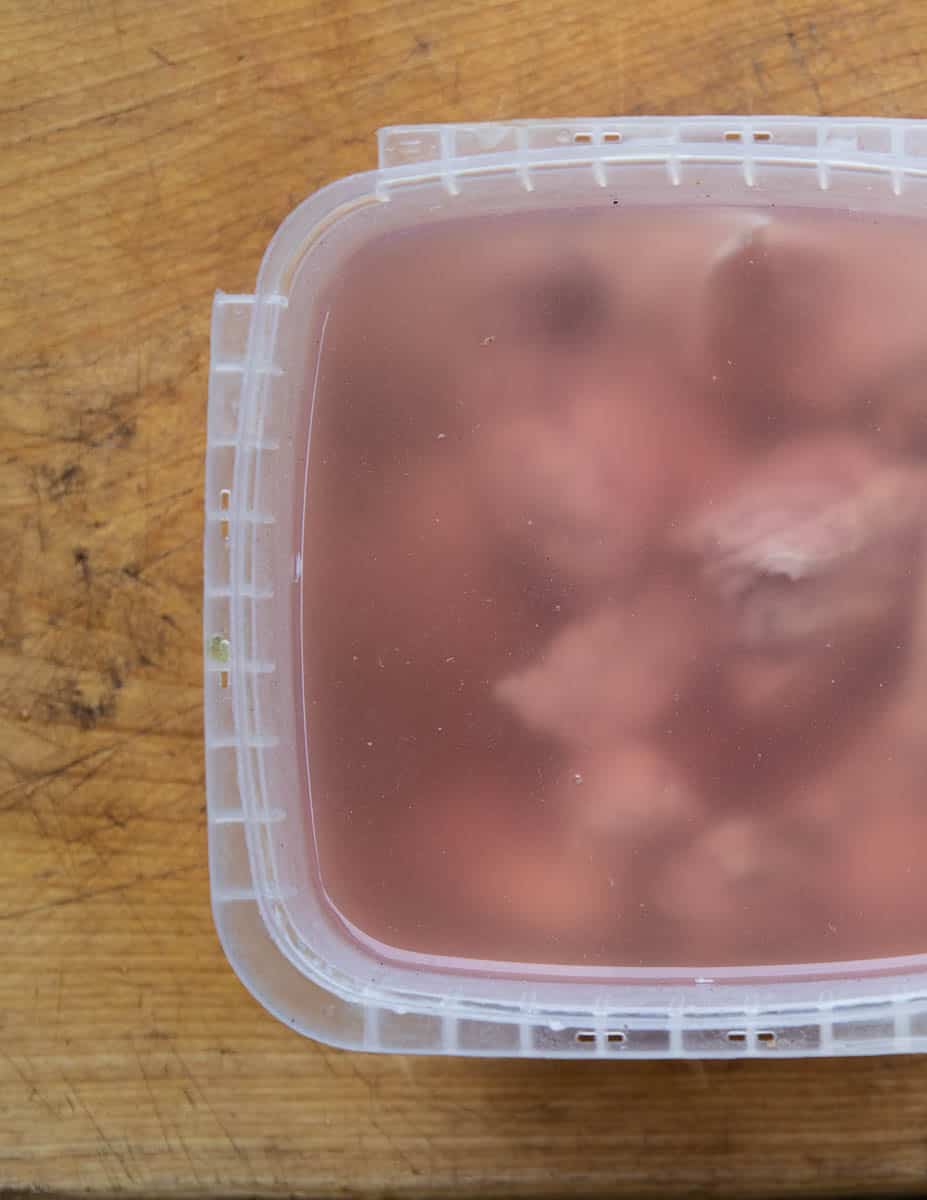
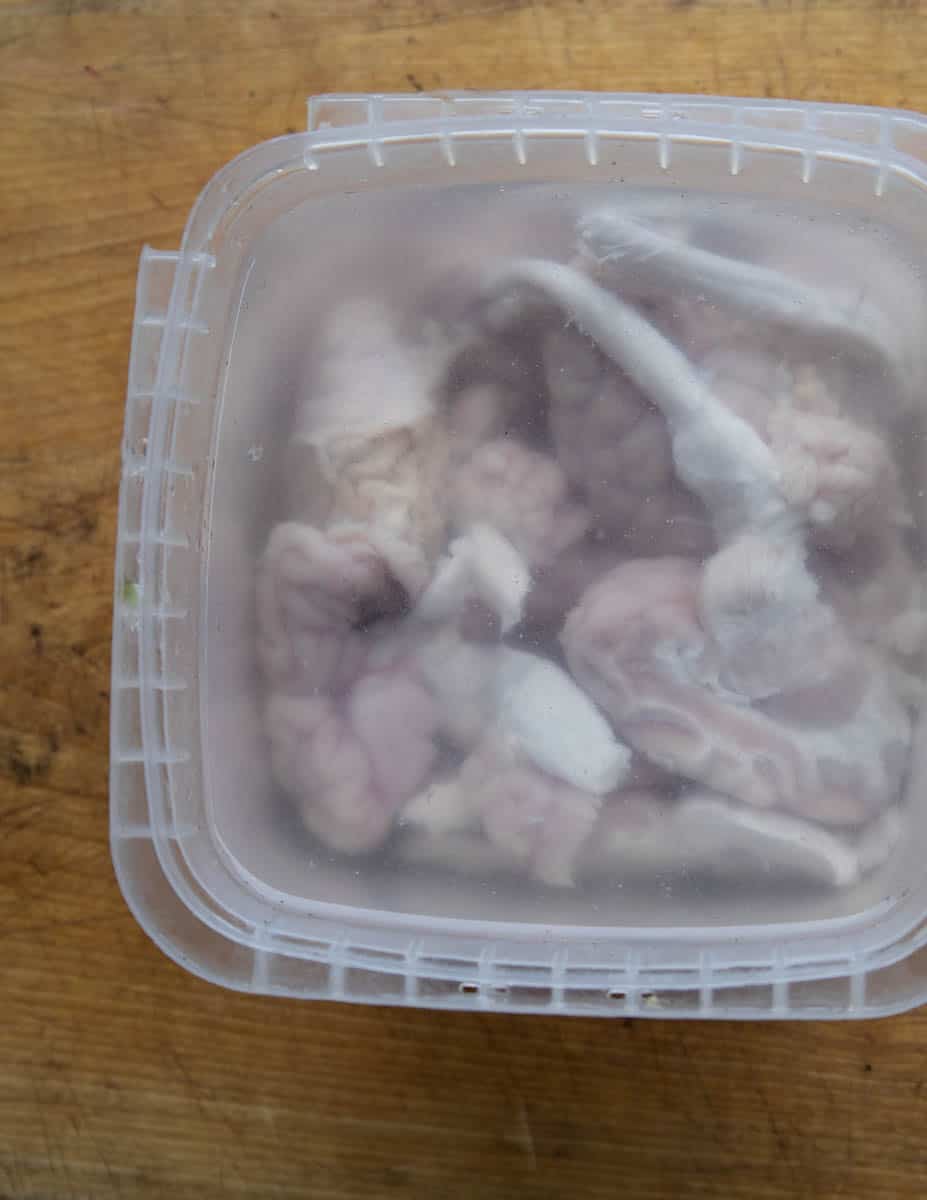
Most recipes will call for brains to be soaked in water or milk before cooking, but often don't mention why. The reason is to purge them of blood, which will mellow the flavor, as keep a better color. Typically for me it takes 12-24 hour to purge brains of blood, although it can probably be done quicker if you change the soaking liquid more frequently.
Second soak to add flavor
After purging them of blood, I might soak them in a flavorful liquid like stock, milk scented with nutmeg, or water with salt and a splash of acid like vinegar or citrus. This is where you can begin to layer flavors, and it's a great technique for lots of offal and organ meats—not just brains.
3. Poaching
Once the brains are soaked, you could cook them fresh, but at least to start, especially if you're serving them to others, I recommend par cooking them to set their shape, making them easier to hide in things, and add layers of flavor.
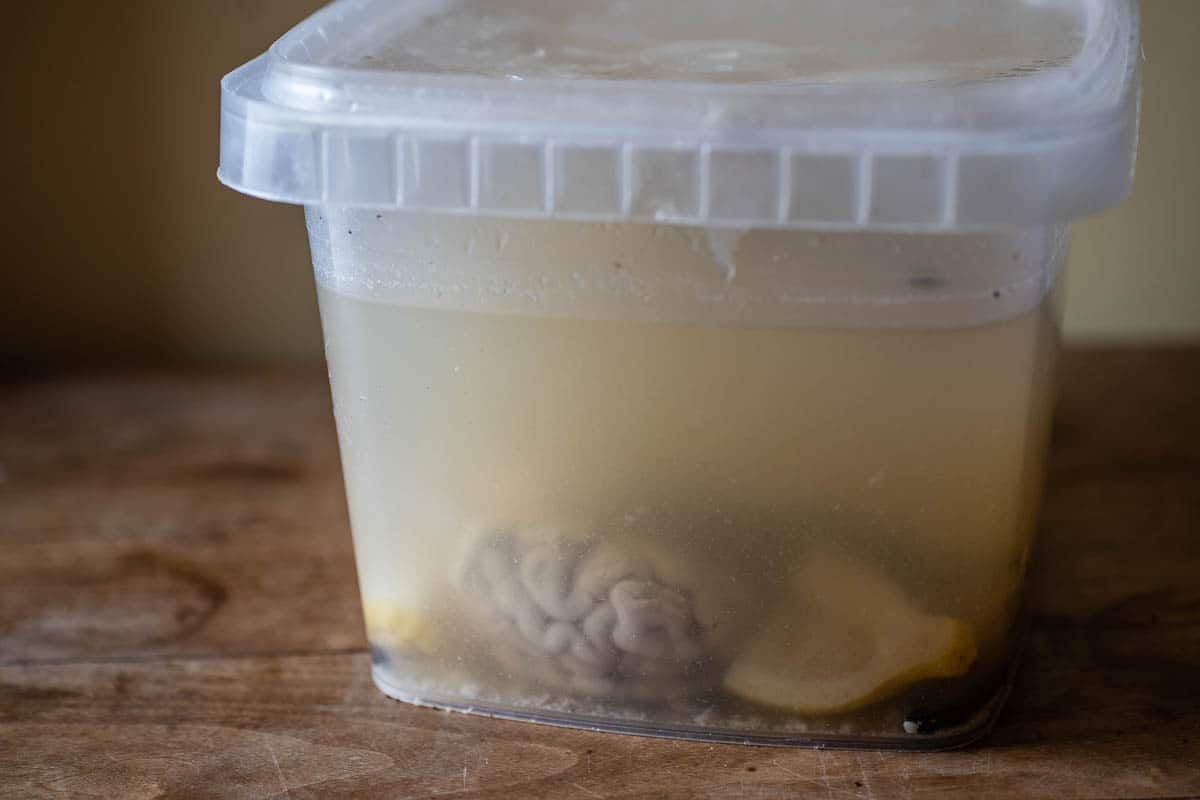
Next, the brains are poached in liquid, in my world this is typically with water, salt, bay leaf and lemon peel, although milk or a dairy mixture can be good too. After the brains are cooked, about 20 minutes or so, they're cooled in their liquid, then refrigerated.
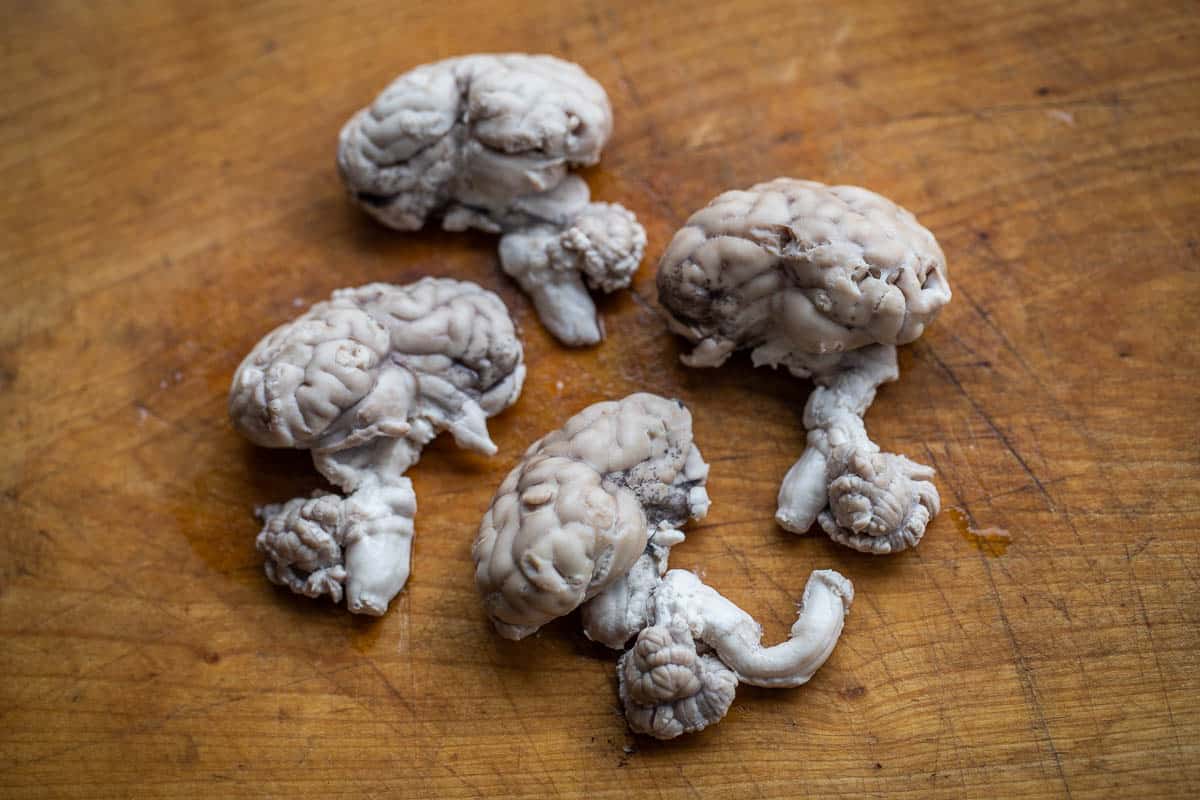
4. Cooking (reheating)
After poaching and chilling comes the fun part: cooking, or reheating as the case may be. After cooking, brains will be firm, which makes them easy to handle and cut into attractive, evenly sized pieces. As they're heated, the brains will relax, getting delicate and creamy, a bit like fatty, semi-soft cheese.
Poultry Brains
Eating the brains of wild poultry isn't recommended in the United States (I can't speak to anywhere else) but the farmed partridge brains below were delicious. Serving small birds like this used to be an honorable (and expensive) way to serve poultry in fancy European restaurants.
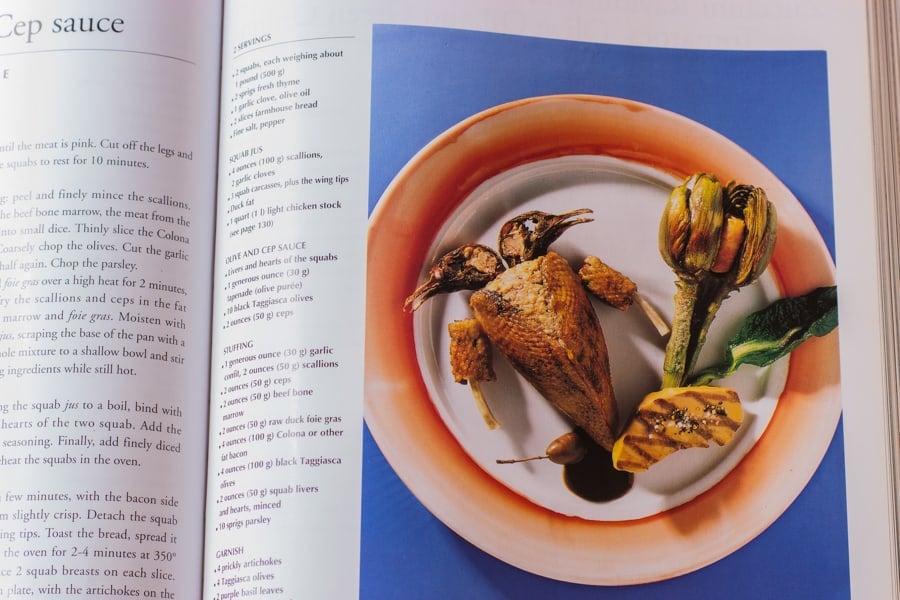
After roasting, the head is crisp and easily sliced with a sharp paring knife for the diner to pick out the meat. Woodcock was said to be particularly good.
Marco Pierre White, one of the chefs who taught Gordon Ramsay, serves it up like that, along with a healthy dose of kitchen noir in his first book—a chef cookbook cult classic in the vein of Anthony Bourdain.
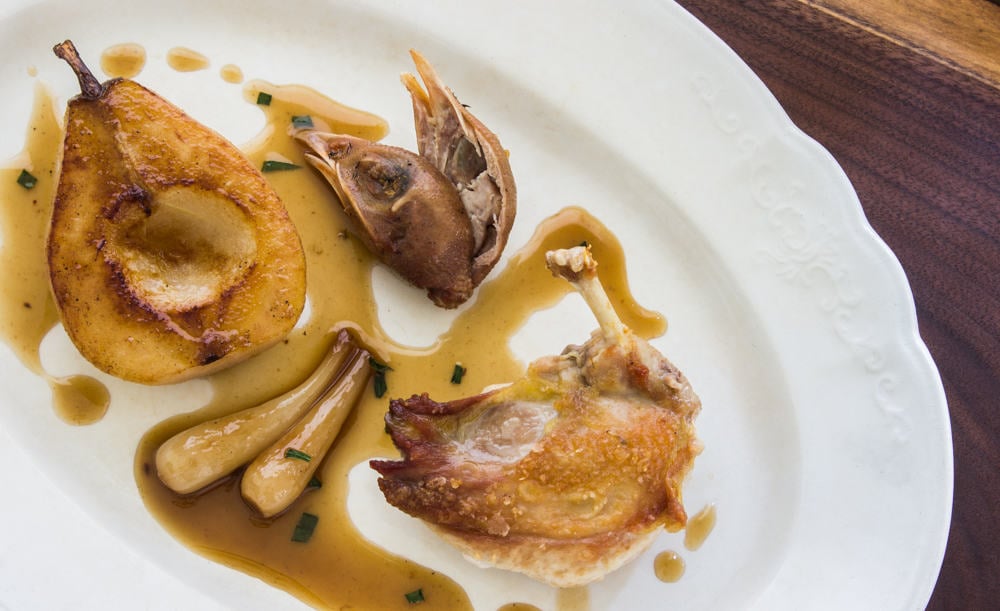
Brains You Can't Eat
It would be remiss not to mention the brains that shouldn't be eaten. Some places may have restrictions on the age of animals and other things, and I can't speak to where you live, I do know 3 that are pretty certain though (if you have possible additions, leave a comment or send me a message).
The reason for caution, and I'm just covering myself here, don't let it deter you, is prions. Prions can cause neurogenerative diseases (mad cow and others) and, they're freaky. Don't eat these brains.
Venison
While it might be safe in non-CWD areas, it's nothing I would mess with.
Squirrel
Once a delicacy in the American south, eating squirrel brains has caused prion diseases in humans just like mad cow.
Human
In Papua New Guinea a grisly funeral ritual is reportedly linked to another neurodegenerative disease called Kuru. I'll stick with pork brains.
Tips For Cooking Brains
- Washing and soaking brains also helps ensure there's no bone fragments.
- Bay leaf and lemon are two of the strongest partners I recommend for a delicate flavored dish.
- Strong flavors like curry or harissa can work with brains too, where they become submissive and more important in a textural sense.
- Play on the soft texture. Brains are a natural for ravioli filling with cheese, scrambled eggs, or other, similarly textured things.
- Breading and frying never hurt anything.
More
If you like offal, make sure to read How to Cook Rocky Mountain Oysters.
How to Remove Brains From A Skull
Equipment
- 1 Reciprocating saw
- 1 cinderblock or other heavy weight for stabalizing the head
Ingredients
- lamb or goat heads as needed
Instructions
- Stabalize the head so that it will not move when you cut it with the saw. In the video I demonstrate this by putting the nose of a sheep head into a cider block. Use what you have, just remember to be careful.
- Starting at the top of the skull, cut the head in half vertically. Remove the brains with a spoon, rinse clean and refrigerate or freeze.
Video
Notes
Recipes
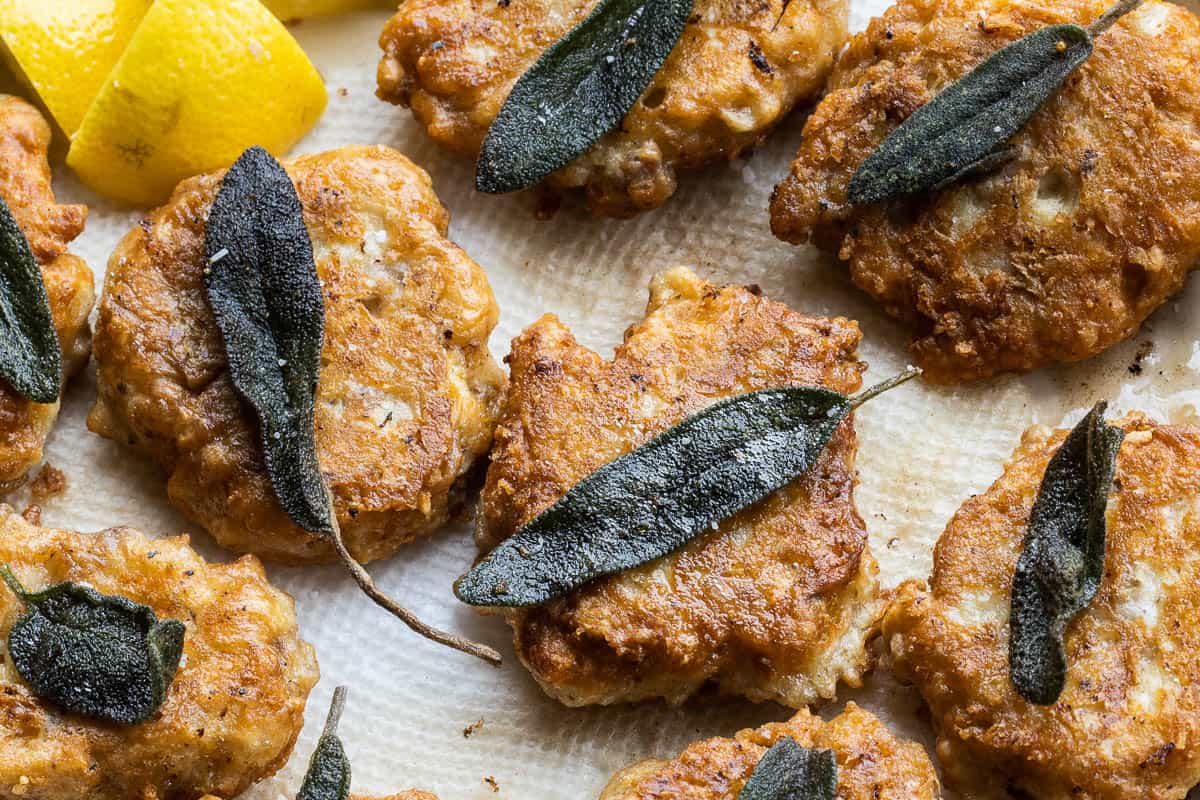
Brain Fritters with Gruyere, Lemon and Sage
There's a reason this is at the top. If you're new to brains, start here. No one will suspect a thing.
Brain Salad with Herbs and Pickled Peppers
Brains are good cool too, as you might have chicken salad. The pepper confetti is a great trick here: even if you don't feel like brain salad you should take a peek and remember that.
Simple Brains a la Creme
Equipment
- 1 2 quart container for brining and soaking
Ingredients
- Brains 2-3 oz pieces per person, pork and lamb are the most common I see
- Chopped tarragon chives, chervil, and parsley
- Kosher salt to taste
- Unsalted butter a few knobs
- Splash of white wine
- Milk as needed for soaking
- All purpose flour for dredging
- Slices of good toast like brioche, spread with butter and freshly toasted in an oven, as needed
- Finely diced shallots a tiny handful
- heavy cream ¼ cup per person
Instructions
- Whisk enough milk to cover the brains by 3x their volume with salt, just until you can taste it. Immerse the brains in the salt milk, then allow to sit overnight.
- The next day, drain and rinse the brains and pat completely dry. If you can remove the thin membrane, do so, but if it seems to tough, or you can find it, don't worry, I don't find it offensive, but the brains may curl a bit more as they cook.
- To cook, heat a pan with butter until lightly browned, dredge the brains in flour, tap off the excess, and fry golden on each side.
- Add the shallots, season lightly with salt, then deglaze the pan with the wine, cook down by half, and add enough cream to make a good sauce, enough to completely coat the brains, and then some.
- Simmer the brains for a bit in the sauce until lightly thickened, then whisk in a tablespoon or two of butter, then the herbs and lemon juice. Finally, double check the seasoning one last time, adjust as needed, and serve on top of thin slices of toasted brioche.



Cornelius J. Cudworth III
MOST SPLENDID ORGAN RECIPE EVER CONSTRUCTED.
As a man who grew up consuming the most unconventional of foods: bubble and squeak, blood pudding, jellied eels and spotted dick- I am proud to say I have no gag reflex whatsoever. It is a delight to see another with an appreciation for the humble brain, and an unapologetic one at that. I found myself in a perilous predicament ereyesterday. My chef went on strike, complained that I was paying him peanuts (he has a nut allergy) and promptly quit. I quickly entered a state of panic, I lacked the skill to cook for myself, a soft boiled egg was an enigmatic challenge to me, to turn it hard, even worse. Besides, these meals would simply not be elaborate enough for a high status individual such as myself, I would surely perish from the hit to my pride before the starvation even set in. As I was just about to say my prayers and cut my malignant chef out of my will, I came across your beautiful guide. How serendipitous! Brain a la Creme, Brain Salad, Brain Fritters, so many meals I could make out of the charming woodland critters! And such simple guide to follow, truly wonderful. Through you I have no only been able to save my life, but also discovered a newfound passion for the culinary arts. As for the food itself, it was marvellous, splendid, absolutely decadent and delicious! I would give it five stars, however my purebred Arabian stallion plunged his majestic head through the window and eviscerated half of my precious meal, so I’ll settle for four.
Alan Bergo
Just so everyone's clear this review is fake and intended to make fun of eating offal/organ meats. To me, what the commentor's truly saying is: "I don't understand this food and it makes me uncomfortable, I would never try it (and I haven't) so I'm going to say it's gross in a comedic, side-handed way while also hiding my identify with a fake email so I don't have to explain myself or defend my discomfort logically". The effort people will put into criticizing and belittling something that isn't normal to them, and doesn't affect them, is interesting.
Cornelius J. Cudworth III
Hey Alan, regrettably breaking character to clarify some things. The email is real, you can contact me on it, though I might not respond cause I never check it. I created Cornelius in 2022, when I saw these ridiculously aggressive reviews on a children’s frisbee and decided to create this extremely eccentric British guy as kind of an inside joke, leaving a similar 4 star review about how wonderful the frisbee was. Shortly after, the 10 000+ reviews boasted on the website disappeared, and suddenly I had the funniest story ever conceived. Since then, I have dedicated myself to making these reviews, mostly just to make people laugh. It is not intended as any sort of criticism, though I understand why you would see it that way. It would be hypocritical of me to find it gross, I have eaten spider cookies, green ant infused milk, moth larvae tea and a kangaroo sausage roll among other things. I will take your comment as a direct challenge though, I’ll eat brains before I die (or maybe after?) and will update you on this thread. I have ARFID so I can’t promise I’ll enjoy the taste, but I will try it
Alan Bergo
Picky eater and a virgin, I get it now.
Margo Moore
My family was half German (rest Scots-Irish and French, but cooking was nearly all German. We were familiar with eating calf heart ground up with pot riast snd made into Rinderwurst (beef sausage), so when my mother and I were ordered the delicacy of very young calf heart, stuffed with bread dressing and roasted, we did not hesitate. It was not very big, and we ate all of it, sliced. Simply delicious! Unfortunately, I don’t know how to sew it back up and how to roast it. I would never be able to buy such a young veal heart, so could try lamb hearts. I should think 325, no more. What do you advise?
Alan Bergo
Hi Margo, take a look at my recipe here. https://shepherdsongfarm.com/recipe-videos/stuffed-lamb-hearts/#recipe
Jen
I’m doing this dish primarily for the health benefits. Lambs brains are very rich in omegas. And unlike seafood, they’re not contaminated by mercury.
To me they even taste like seafood!
Alan Bergo
Brains are very high in fat, to be certain.
Priya Goel
Hello Sir
Liked reading your article on cooking brains 🧠🙂
I'm writing to you I've ordered some fresh pigs brains, pigs race are called noir bigorre french race.
Free roamed very well looked after etc...
Is it possible to make a pig brain tartare raw style or is it important to cook pigs brains
Any thoughts?
Can one eat rare pork brain?
Kind regards
Goel
Alan Bergo
No, do not eat brains raw or rare.
Leon Wieckowski
I will try this. Thank you.
Alan Bergo
I'm here if you have any follow up questions.
Poly
Dude! This is all beyond amazing. I'm going to ask my grassfed sheep/goat farmer buddy to bring me some of these brains this weekend and if sweetbreads taste akin to prairy oysters I have to try those too ; D
Is there a taste difference or advantage in the two though (sheep/goat)!?
Much thnx for the lovely recepies!
Alan Bergo
Goat and lamb are basically interchangeable.
Leon Wieckowski
I haven't tried Goats brains, but Goats meat is a lot leaner than Lamb and tastes much the same. It's a bit chewier around the bone though. Here in Australia, feral Goat has no fat but is not easy to find in butchers stores as it is exported. I used to farm goats and found the meat better than lamb. For me to buy it now, I go to an Afghan butcher who sells it. It needs to be marketed to the Aussie public, who think eating Goat is Taboo!
Alan Bergo
Hey Leon. I actually write for two websites. The other one is only lamb and goat recipes. Great little family farm I work with. https://www.shepherdsongfarm.com/
Jernej
Thank you for that post and ideas. Just wondering why you dont reccomend to eat venison brains? Well I am not that familiar with CWD because in south Europe we dont have it yet. But I am reading now about the CWD and there is little prove that it can be transmited to humans? I am eating venison (roe deer, red deer, chaimos, muflon) brains all my life and they are delicious. In fact I have never eaten brains other then venison in my life :). We also never soke venison brains, just remove the outer membrane (containing veins) under warm runing water. We also dont precook them. For me they also dont have any "off"/gamy flavours. Liver and kidneys are much stronger for me for sure. However, I always ate vension brains very fresh - up to one day after the harvest. I also eat just brains from animals that I harvested either myself or my dad.
Alan Bergo
Most of my readers are in the US, and eating venison brains is extremely taboo because of CWD. Squirrel brains too as they have a prion disease that's spread to humans. I actually have a relative who was diagnosed with it recently.
B. Fields
I grew up in a secular Jewish home in Brooklyn, NY in the 40s and 50s. My mother often served poached calf's brains with ground black pepper and schmaltz (chicken fat) that she rendered herself. I don't recall her ever eating the brains but my dad and I fought over them. I love them to this day and find them increasingly difficult to source. Today I found pig brains at a local Asian market and tonight that is what's for supper. For me. Husband gets last night's leftovers!
Alan Bergo
There’s just something about food and memories that’s so special. I was told great grandmother fed me fried brain sandwiches, or pieces of them, in my high hair. Good for you for tracking some down and eating them even if the rest of the family won’t!
Stan
During the fifties my mother served baked calf brains every few weeks. They were baked in a glass pie plate that was lined with thinly sliced potatoes. They were delicious.
Alan Bergo
Yummy. My great grandmother used to serve me fried brain sandwiches in my highchair.
Kelly
That sounds delicious! How long and what temperature ?
Alan Bergo
I couldnt tell you as I was a toddler. I would assume they were dredged in flour-egg flour, fried crisp, and put on white bread with mayo, onion, lettuce and tomato. Maybe mustard knowing her. I was told it was very simple.
Kelly
Haha, I meant the guy above! Usually recipes for frying don't specify a temperature.
Nick
Hi Alan,
Your response regarding frozen brains seems to be that you believe they freeze poorly. Of course fresh is best, but here in the UK, insane food safety regulation makes the purchase of ‘Cat 4’ organs impossible even in small slaughterhouses that service organic farmers and supply artisanal butchers shops As I live in the countryside surrounded by livestock this is immensely frustrating. I happen to think raw sweetbreads freeze quite well. I suspect testicles/fries might not take to freezing, but I rather hoped that - if frozen quickly and hygeinically, a brain would not be so bad. Can you offer any further thoughts on this topic. It’s the most critical issue that offal advocates face in the UK.
Alan Bergo
Hey Nick, if a comment of mine came off like that it wasn't what I intended. I freeze brains with good success. Typically I freeze them raw. Testicles, sweetbreads, lungs, and all kinds of other things freeze just fine. The other half of my job is working with a lamb and goat farm and they ship around the country, all frozen, all the time. Works fine. Cooked, frozen meat can be dicey as freezing makes water expand and it ruptures the cells and makes things mushy.
ashok
Thanks For Sharing this amazing recipe. My family loved it. I will be sharing this recipe with my friends. Hope the will like it.
Keith
Haven't had them for years. Lamb brains were good cheap delicacy where I grew up in NZ. Iv been too lazy to try here in Canada but this time the lamb i bought came with head cut in two, so will be trying the first of your recipes tonight.
Ron
I would rather eat my wife’s hairy azzhole after she just worked out than eat f u c k I n brains.
Alan Bergo
Hi Ron!
Brains are a traditional food in many places, and, just like your wife, they can be an acquired taste. Prepared properly (it’s all in the technique) both can be enjoyable. I’d be happy to work with your wife to come up with some ideas that might work for you, feel free to send me an email to discuss. Alan
Kasi
I haven't tried the recipe, but 5 stars for your reply to Ron! I sure enjoyed that bit! 😂
Alan Bergo
LOL. Thanks Kasi. I do get the occasional troll here.
Cj
lol! Great response!
Alan Bergo
Gotta love the internet 😂🫡
Tamara
Hi there. I stumbled onto your page, as I was looking for alternative ways to cook brains. I had tacos with scrambled brain & that hit the spot. However, I’m responding to your Hilarious comment to Ron. I know it’s old news now, but I laughed so hard, it confirmed to me that life is still funny.
Humor has saved me many times & I still love a Great comeback. Warm Hugs to you & Thank you,
from Coastal Oregon USA
Rudolph Czarzoff
Make sure there are no dangle berries first!
Alan Bergo
Not irrelevant at all.
Alex
Hello,
its a little bit off topic but I would like to know whats pan sauce is in the picture with roasted pigeon head and leg if Iam not mistaken with a pear a side?
Alan Bergo
It was a play on "partridge in a pear tree". Simple pan sauce made from deglazing a saute pan I cooked poultry in with wine.
Gina Coulter
Hi Alan, have you ever roasted ox/ beef heart. My mum used to cut it in half take the arteries out & stuff it, tie it or skewer it back together & roast it. So tender & tasty.
Alan Bergo
Yes beef heart is wonderful.
Dorothy Staska
If you don't at least try you don't know what you are missing out on. I grew up eating offal. I cook brains and tongue. Must say I can't abide liver unless it's from a chicken or a goose.
Not Greg
Does this recipe work with people brains as well?
Alan Bergo
Yes, of course. I'd be remiss if I didn't mention that consumption of human brains is linked to a number of nasty disorders though. I'd probably stick with pork, also, you can fuck off with your idiotic comments.
Sarah
Hi!
Is there an alternative to soaking in milk? I want to try cooking with brains but am really, terribly lactose intolerant. Obviously, once rinsed, there should technically be no lactose on the brain since lactose doesn't really chemically adhere to hydrophobic surfaces, but I am also hoping there is another curing method. I guess I could always use lactose-free milk.
Also, do you know of any recipes for dried brain? Can they be marinated and dried into some kind of jerky? Or just any other recipes not involving milk/cheese/cream?
-Sarah
Alan Bergo
Hi Sarah. An easy way to get by the dairy is to soak organ meats in salt water. I have never heard of drying brains, but it could probably be done if they are very, very fresh. Good luck.
joy coleman
Thank you for this info as I grew up eating all these unusual part of animals , fish, birds etc. My mothers Dad was from ENGLAND and her Mom was from American Indians decent. Many foods we enjoyed were toboo with most of the population. How sad when they never ate squirrel brains, chicken feet in dumplings, beef tongue, tripe, anchoive paste, hand picked mushrooms from nearby wood. Souse meat was made from the head of the hog and til this day, I steal render pork fat for cooking plus the tasty cracklings. I have yet to cook pork brains from scratch. That is happening this week, thanks to your recipe. That was my late mom who did it back in those days. Will let you know if I get anyone else around to join me. Lol
Kelly
One recipe I found said brains must be fresh, never frozen. Is that true? And is it also necessary for sweetbreads? If so, I'll have to wait until my situation changes to try them.
Alan Bergo
No brains are fine frozen.
Aurora Ioanid
My God, chicken feet dumplings??/I adore chicken feet. I put them in soups, and fish them out and eat the, 🙂 But dumplings? Please post recipe, for crying out loud 🙂